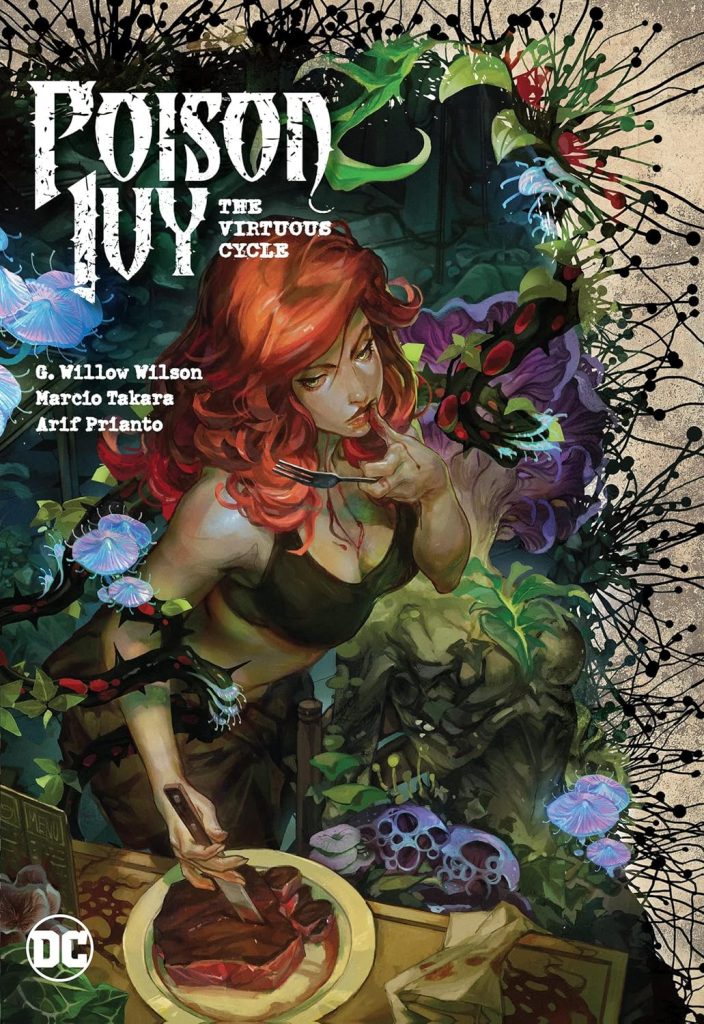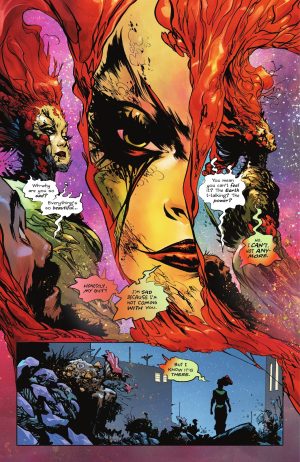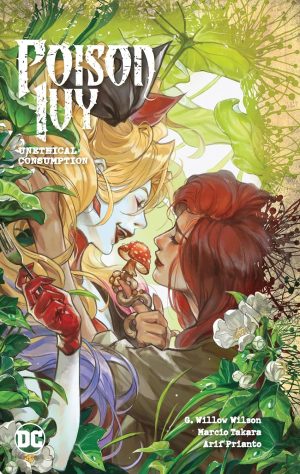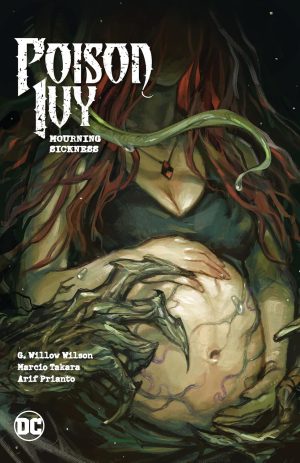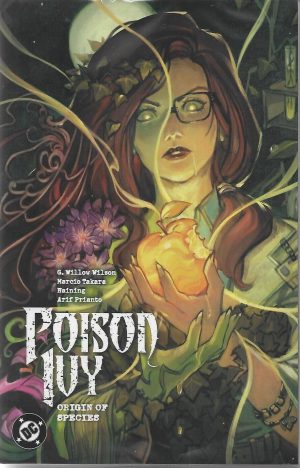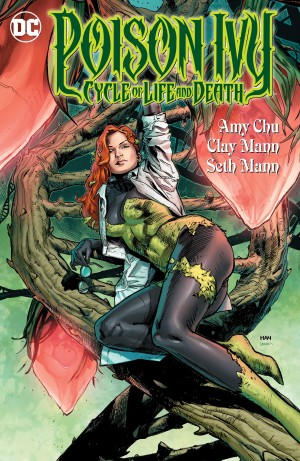Review by Frank Plowright
Poison Ivy was a plain crook when introduced in the 1960s, but since the 1980s she’s discovered an ecological agenda that’s become more and more relevant. It’s just the lack of compromise about her methods that’s concerning. G. Willow Wilson spells these out with Ivy’s notes over the first two pages of The Virtuous Cycle, and they’re chilling, Ivy’s concern being the wellbeing of the planet, to which humanity is an irrelevance.
In establishing Ivy in her own series Wilson divests her of Harley Quinn, their relationship always seeming more men’s fantasy than real, underlined by artist Marcio Takara supplying one last thrill. Wilson’s research supporting Ivy’s agenda is convincing, and doesn’t take the obvious route, her first specific explanation targeting the consequences of producing the agave syrup favoured by vegans as a sugar alternative.
Once Takara’s got pin-ups of Ivy with Harley out of his system, there’s none of the usual objectification accompanying Ivy’s appearance in page after page of decorative art, colourist Arif Prianto contributing greatly to that. Takara is thoughtful regarding Ivy, one nice continuing touch being that what at first seems to be a tattoo is actually small plant shoots constantly sprouting from her body.
It isn’t just ecological issues on Wilson’s agenda. There’s a good sequence of a slimy prejudiced boss getting what’s coming to him, and while Ivy maintains an assured presence, the accompanying internal monologue reveals doubts. They indicate that whatever Ivy believes herself to be, a seed of humanity remains. Wilson maintains the extreme purpose, with Ivy planning to eradicate humanity to save Earth by spreading deadly spores, this chillingly laid out in a second chapter designed to push emotional buttons as Ivy briefly has doubts in response to people being nice and friendly.
There’s a progression forward from the start, with Ivy increasingly prone to hallucinations from continued exposure to spores, imaginatively demonstrated by Takara. The art, though, takes a considerable dip when supplied by Brian Level toward the end. Those are the weakest chapters. Wilson’s set up a conflict that plays out melodramatically. The intention is to confront Ivy with the fallacy of her worldview, but seeing the light transmits as a very convenient ending for a story intended to be finite, but continued due to an enthusiastic response. Alternatively The Virtuous Cycle could be seen as a renewal process, reconfiguring Ivy for going forward. Unethical Consumption will determine that.
Despite a disappointing ending, The Virtuous Cycle is compelling reading when the heights are hit, and that’s for much of the book.
